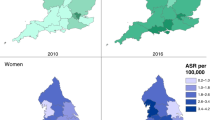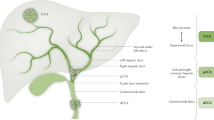Abstract
In 9 years in Kenya, 34 examples of primary liver cancer wer diagnosed in patients in the first two decades of life. This represents 4.7% of all liver cancers during this period. The larger proportion (29) were hepatocellular carcinoma. In the second decade, there was a notable association with macronodular cirrhosis. Analogy with experimental work suggests that cells in mitotic cycle may be more vulnerable to the effect of environmental carcinogens. Five examples of hepatoblastoma were identified at ages from 2 months to 14 years, none showed the features of "mixed" tumours. The ratio of hepatoblastoma to hepatocellular carcinoma was the reverse of that found in other large series of juvenile hepatic tumours. The histopathological features of these tumours are described and problems of their classification are discussed.
This is a preview of subscription content, access via your institution
Access options
Subscribe to this journal
Receive 24 print issues and online access
$259.00 per year
only $10.79 per issue
Buy this article
- Purchase on Springer Link
- Instant access to full article PDF
Prices may be subject to local taxes which are calculated during checkout
Similar content being viewed by others
Rights and permissions
About this article
Cite this article
Cameron, H., Warwick, G. Primary cancer of the liver in Kenyan children. Br J Cancer 36, 793–803 (1977). https://doi.org/10.1038/bjc.1977.264
Issue Date:
DOI: https://doi.org/10.1038/bjc.1977.264
This article is cited by
-
Chronic hepatitis B virus infection and hepatocellular carcinoma in Sub-Saharan Black African children: The pre-vaccination era
Journal Africain du Cancer / African Journal of Cancer (2015)
-
Malignant liver tumors in infants and children
World Journal of Surgery (1980)



